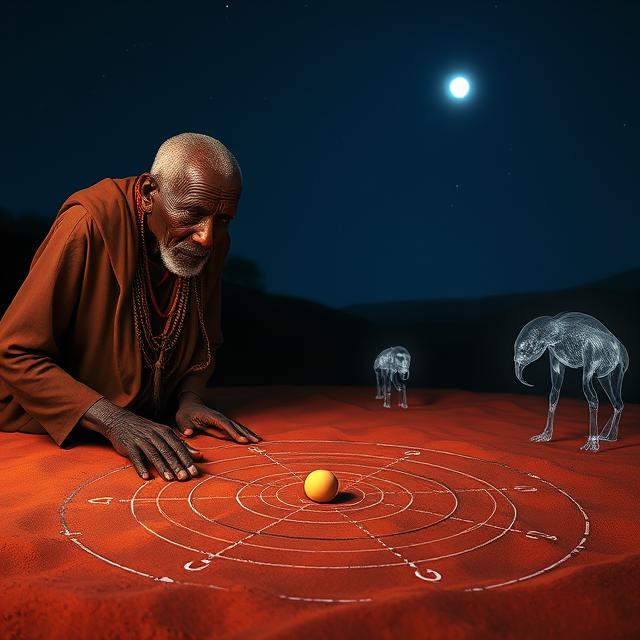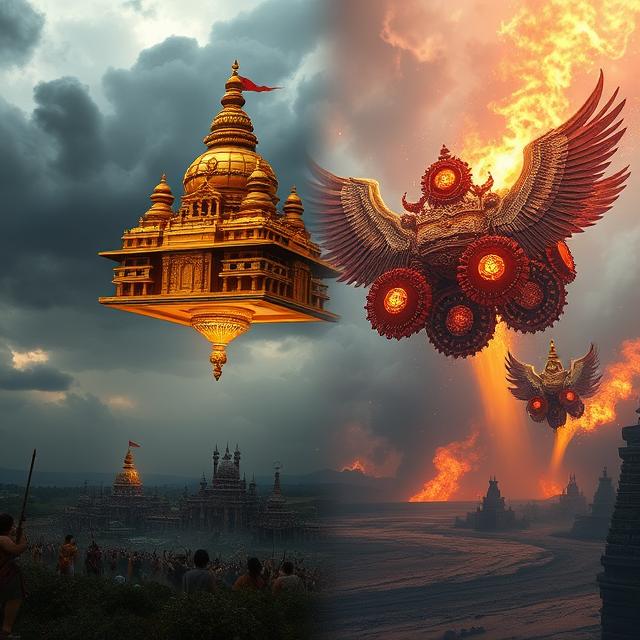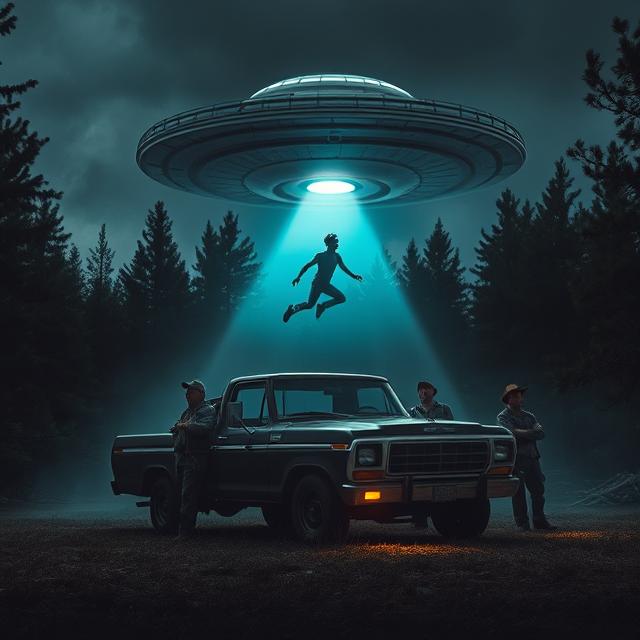Deep within the remote Bandiagara Escarpment of Mali, West Africa, lives the Dogon people, a tribe whose complex culture, vibrant art, and intricate mythology have fascinated anthropologists for over a century. Yet, beneath their rich traditions lies a profound and fiercely debated mystery—one that challenges our understanding of ancient history and our place in the cosmos. The Dogon, according to research that began in the 1930s, possess stunningly accurate astronomical knowledge about the star system of Sirius, information they could not have possibly known without telescopes. This includes details about an invisible companion star, Sirius B, its 50-year orbit, and its incredible density.
This alleged ancient wisdom has become a cornerstone for ancient astronaut theorists, who argue it is definitive proof of extraterrestrial contact. Skeptics, however, point to a much more terrestrial explanation, rooted in cultural contamination and flawed ethnographic research. The controversy pits the idea of a sacred, ancestral knowledge gifted by alien beings against the complexities of colonial-era encounters. Is the Dogon’s celestial insight a legacy from star-faring gods, or a modern myth born from a meeting of two very different worlds?
The Astonishing Claims: A Universe in a Grain of Seed
The heart of the mystery lies in the work of two French anthropologists, Marcel Griaule and Germaine Dieterlen. Beginning in 1931 and continuing for over two decades, they immersed themselves in Dogon culture. In their seminal works, including the book Dieu d’Eau (God of Water), Griaule detailed conversations with a blind Dogon elder named Ogotemmêli. Over 33 days, Ogotemmêli supposedly revealed the tribe’s deepest, most secret cosmology to Griaule.
This cosmology was not just a collection of creation myths; it was a precise and complex astronomical system centered on Sirius, the brightest star in our night sky. The Dogon, Griaule reported, called Sirius A Sigi Tolo, the “star of the Sigui.” But more remarkably, they knew it was not alone. They spoke of a companion star, Pō Tolo, which translates to “Digitaria star” (pō being the name for the tiny, heavy Digitaria seed, also known as fonio).
According to Griaule’s account, the Dogon knew the following about Pō Tolo (Sirius B):
- It is invisible: They claimed this second star could not be seen with the naked eye.
- It has a 50-year orbit: They stated that Pō Tolo completes an elliptical orbit around Sigi Tolo every 50 years. This knowledge, they said, is the basis for their most important ceremony, the Sigui, which is held to celebrate the renewal of the world in sync with this orbital period.
- It is incredibly heavy: The Dogon described Pō Tolo as being made of a super-dense metal called sagala, so heavy that “all the earthly beings combined cannot lift it.”
- It is small and white: They characterized the star as the “smallest thing there is,” yet white in color.
This information is breathtakingly accurate. Sirius B is indeed a white dwarf star, invisible to the naked eye, and was only first photographed in 1970. It is incredibly dense, packing the mass of our sun into a volume roughly the size of the Earth. Its orbital period around Sirius A is 50.4 years. The Dogon, Griaule claimed, had preserved this knowledge for centuries, representing it in intricate sand drawings and ancient artifacts. Furthermore, they even spoke of a third star in the system, Emme Ya Tolo (“Sorghum Female star”), which has been a subject of speculation, though unconfirmed, by modern astronomers as a possible “Sirius C.”
The Nommo: Teachers from the Stars?
How did the Dogon acquire this impossible knowledge? Their own mythology provides a fantastical answer. They claim this wisdom was imparted to them by the Nommo, amphibious, fish-like beings who descended from the Sirius system in an “ark” accompanied by fire and thunder. These “Masters of the Water” or “Teachers” were said to have brought civilization and order to humanity. The Nommo, described as hermaphroditic and water-dwelling, are central figures in Dogon art and ritual, their story forming the basis for the tribe’s belief system.
This narrative was seized upon by author Robert K.G. Temple in his 1976 book, The Sirius Mystery. Temple connected the dots, arguing that the Nommo were extraterrestrials from a planet in the Sirius system who visited Earth in the distant past, leaving behind a legacy of advanced knowledge not only with the Dogon but also with ancient civilizations like the Egyptians and Sumerians. For proponents of the ancient astronaut theory, the Dogon case is exhibit A—irrefutable evidence of alien contact.
The Skeptical View: A Terrestrial Explanation
As compelling as the extraterrestrial theory is, it is met with powerful skepticism from the scientific community. The counter-argument, championed by figures like the famed astronomer Carl Sagan, does not involve celestial visitors but rather earthly ones: European missionaries, soldiers, and anthropologists.
The theory of “cultural contamination” posits that the Dogon learned about Sirius B from Westerners during the early 20th century. In the 1920s and 30s, when Marcel Griaule began his fieldwork, the nature of Sirius B was a hot topic in European astronomical circles. The star had been predicted mathematically in 1844 and visually confirmed in 1862, and its strange, super-dense nature was a subject of much discussion.
Mali, where the Dogon live, was a French colony, and the region was far from isolated. There was a significant presence of French administrators and military personnel. More importantly, numerous scientific and ethnographic expeditions, including the highly publicized Dakar-Djibouti mission led by Griaule himself in 1931, traversed the area. It is plausible, Sagan and others argue, that a conversation about the stars took place between a knowledgeable European and a curious Dogon tribesperson. This new, fascinating information about Sirius could have then been absorbed and integrated into the existing framework of Dogon mythology, which already placed a high value on the star.
Questioning the Source: The Griaule Controversy
The skepticism runs deeper than just the possibility of cultural transfer. It calls into question the very foundation of the claim: Marcel Griaule’s research itself. The anthropologist Walter van Beek spent years living with the Dogon in the 1990s and reported a startling discovery: he could find no one who knew the advanced astronomical lore Griaule described. The elders he spoke with knew of Sirius as Sigi Tolo, but the intricate details about Pō Tolo, its orbit, and its density were completely absent from their knowledge base.
Van Beek suggested that Griaule, who was known to be a forceful and directed interviewer, may have unintentionally “contaminated his own data.” He may have asked leading questions, presenting his own knowledge of Sirius B to the Dogon, who, out of respect or a cultural desire for consensus, may have incorporated his suggestions into their responses. In this view, Griaule wasn’t recording an ancient tradition but was, in a sense, co-creating a new one.
Critics also point out that while the Dogon’s knowledge seems impressive, it contains errors and omissions that betray a 1920s European origin. For example, the Dogon allegedly knew of Saturn’s rings and Jupiter’s moons but were seemingly unaware of Uranus, Neptune, or Pluto. As Carl Sagan noted, this is a peculiar set of facts for all-knowing aliens to impart, but it aligns perfectly with the common astronomical knowledge available to an educated European of that era.
A Legacy of Mystery
The debate over the Dogon’s celestial knowledge is a clash of worldviews. On one side is the tantalizing possibility that humanity’s history is intertwined with visitors from the stars, a narrative that gives profound meaning to ancient myths. On the other is a more complex, and perhaps more human, story of cultural exchange, colonial encounters, and the ways in which knowledge is created, shared, and transformed.
Was Ogotemmêli the guardian of a sacred, secret tradition passed down from amphibious gods? Or was he a clever elder who wove the fascinating stories of a French visitor into his own people’s rich cosmological tapestry? Did Robert Temple uncover a genuine extraterrestrial mystery, or did he simply build an extraordinary theory upon the questionable data of a single anthropologist?
Today, the Dogon people continue to practice their traditions, largely indifferent to the controversy that swirls around their beliefs. For them, Sirius remains a star of profound spiritual importance, a guide for their rituals and a link to their ancestors. Whether that link extends beyond our planet or simply reflects a fascinating chapter in human history remains one of the most compelling and unsolved mysteries of our time.
Want to explore the shadows even deeper? For more chilling cases like this, visit SinisterArchive.com, where the legends are real.




